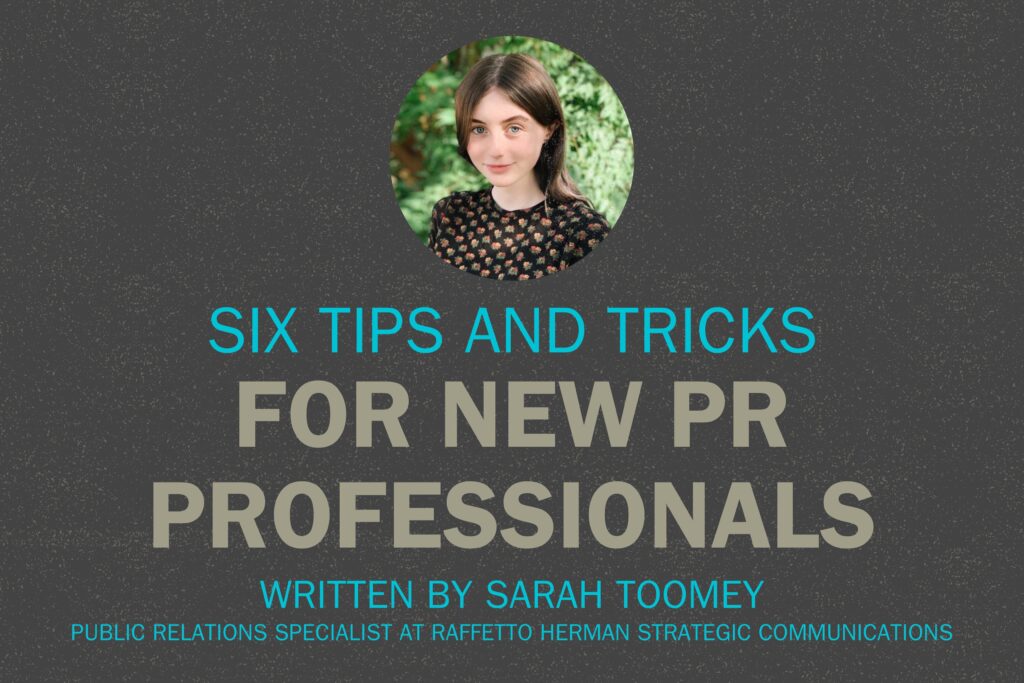Six Tips and Tricks for New PR Professionals

Getting a start in the world of public relations (PR) can be daunting. If you’re a new PR professional with your foot in the door, you may be wondering how to manage your day-to-day tasks while upskilling your strategic know-how. Here’s my advice, as someone who was recently in your shoes.
To impress your superiors, you must have a thorough understanding of your daily responsibilities to keep the wheels moving. You’ll also have to go above and beyond your routines to generate ideas and create trends, rather than just following them. At this point, you might be wondering: how can I do both well? Here are some tips and tricks gleaned from my experience joining the industry:
- Find ways to gain experience: Many PR firms offer internships and fellowship programs that provide you with the much-needed skills and experience required for most entry-level positions. Such programs provide a generalist understanding of the elements of working in PR. Beyond that, many fellowship programs lead directly to employment. A firm that is actively hiring will want to hang onto the talent it finds, especially if that talent has proven itself. If you’re interested in exploring a PR fellowship, check out RH Strategic’s Fellowship Program.
- Hone your writing skills: Being a strong writer got you in the door, but being a versatile writer will set you apart from the crowd. On any given day the flexibility of your writing style will be tested as you draft social posts, press releases, pitches or byline content. PR teams are always looking for new hires capable of wielding language catered to a specific audience – whether that be the end user, other businesses or the press. After all, working in PR will often involve making complex ideas, technologies, products and services accessible and exciting for the media, as well as the general public.
- Take advantage of mentorship programs: When I started at RH Strategic, the Mentor-Manager Program was among the most vital supports for me. Regular meetings with my mentor helped me stay on track with my goals, identified potential areas of professional growth and made me feel more integrated into the community. Now that I’m more established, those meetings continue to help me level up my performance, build confidence and find new ways to be an active, contributing member of the team. Many firms offer similar programs. The more you put into those built-in supports, the bigger return on investment you’ll get.
- Follow up, follow up, follow up: When reaching out to the media, you’re likely to hear a lot of crickets. It can be disheartening to send a pitch out to a carefully crafted media list just to get radio silence in response. But that’s not the be-all and end-all of pitching. I’d venture that 50% of my media opportunities come from following up, whether by email or phone. Some reporters even prefer being contacted via social media. Understanding that reporters are people too – some with other jobs entirely, and all with other deadlines and goals – will help you follow up effectively and might result in a well-earned opportunity.
- Learn how to read the news: All PR and communications professionals should have a solid understanding of what reporters are writing and where they are sourcing their information. If you work in a specific industry, read those trade publications and become as familiar as you can with their names, staff and content. Following media members on Twitter is another way to get to know them better. If you consistently read what your target publications are writing, you will have a much better idea of how to adjust your pitches to them.
- Be mindful of deadlines (and setting them): PR is a fast-paced world, but not everything is due by end of day (EOD). Learning how to triage your responsibilities will engender respect from your teammates, whose own tasks will often be entwined with yours. Succeeding in PR is a team effort. When you suggest a deadline for a deliverable on your plate, make sure it’s realistic. Also, ensure the deadlines you set for yourself allow enough time for you to proofread and edit your work to avoid creating more work for others.
Once you understand the fundamentals of PR, you’ll naturally start to experiment with your methods to find new, beneficial tactics. Maintain a sense of curiosity. If you are willing and determined to put in the effort to learn and grow in PR, you will learn that staying on the pulse is exciting. Keeping up with current news cycles will not only benefit you professionally but is also a way to feel tuned in to the world around you.

Sarah Toomey is a Public Relations Specialist at Raffetto Herman Strategic Communications, where she has secured placements in top-tier publications such as ABC and Politico. As a former public-school teacher, Sarah draws on organizational skills to manage client deliverables.
